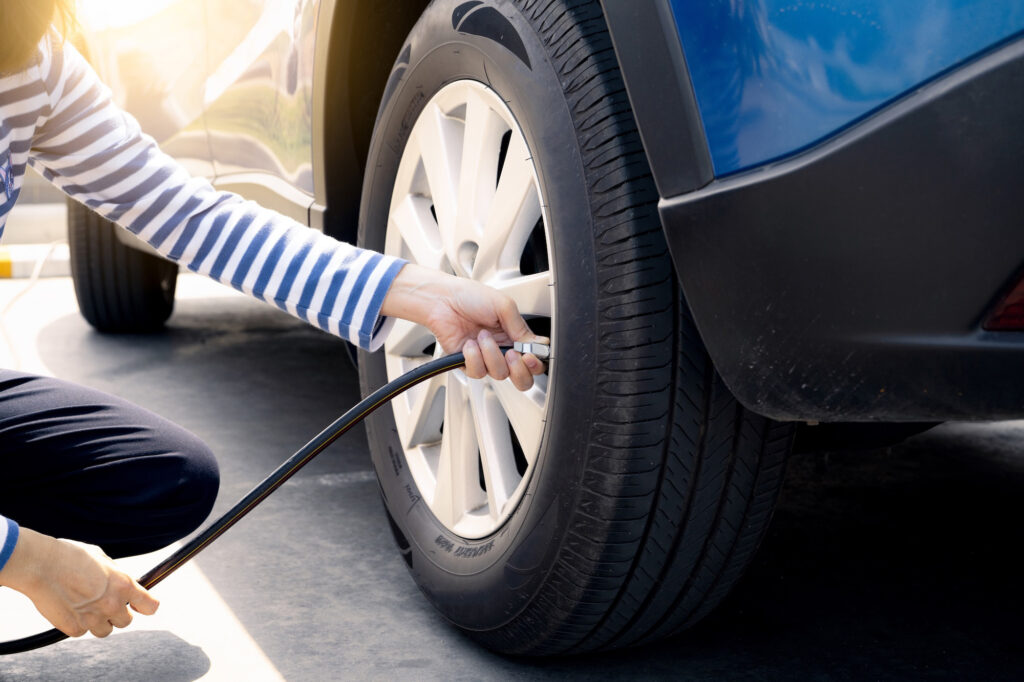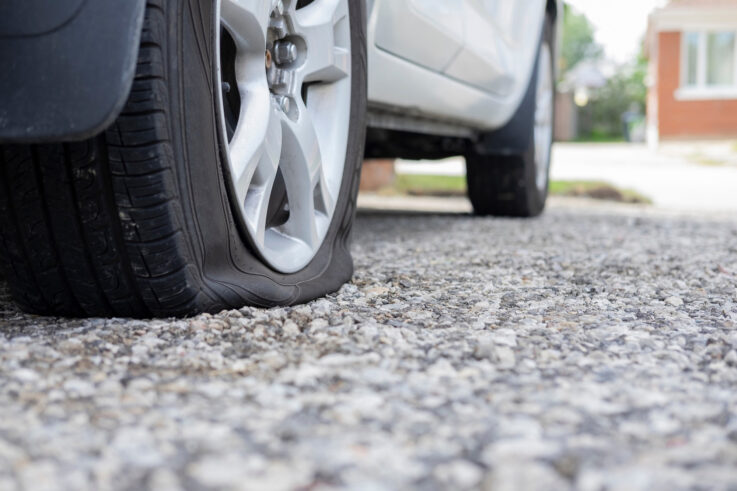Hearing that dreaded thump of a flat tire while driving can be stressful, especially when you’ve got places to be. It might be tempting to keep going — but is it safe? Before you risk further damage to your vehicle, here’s what you need to know about driving on a flat.
What Happens When You Drive on a Flat Tire?
Driving on a flat tire can quickly lead to serious damage. When a tire is flat, the rim isn’t properly cushioned, causing it to grind against the pavement. You may end up needing to replace both the tire and the rim, which will drive up your repair costs. Worse, driving on a flat reduces traction and makes it harder to steer, increasing your risk of losing control. It can also strain your suspension and braking system, leading to misalignment and other expensive repairs.
How to Safely Handle a Flat Tire
If you suddenly find yourself with a flat tire while driving, it’s important to remain calm. Here’s what to do:
1. Pull Over Safely
As soon as you notice a flat, pull over to a safe, level spot away from traffic — ideally a parking lot or wide shoulder. On highways, avoid narrow shoulders or stopping in traffic lanes. Slow down gradually and turn on your hazard lights to alert other drivers. Avoid braking hard, as this can worsen the damage.
2. Inspect the Tire
Once you’ve pulled over, step out and inspect the tire for punctures, cracks or leaks. If it’s not immediately clear whether the tire is completely flat or just low on air, check the pressure with a tire gauge. Sometimes, it’s a slow leak, which gives you more time to get to a service station and address the problem.
3. Use a Spare Tire or Roadside Assistance
If you have a spare tire and feel comfortable changing it, now’s the time. Make sure your car is on a flat surface, engage the emergency brake and use your jack and lug wrench to swap out the flat tire for the spare. If you’re unsure how to change the tire or don’t have the tools, call roadside assistance. Many services can quickly replace the tire or tow your vehicle to a repair shop.
Remember, avoid driving on a flat for longer than necessary — doing so can cause serious damage to your vehicle.
What Are the Long-Term Effects of Driving on a Flat?
Driving on a flat tire, even for a short distance, can significantly reduce the lifespan of your tire and put wear and tear on your vehicle’s rims, suspension and alignment, which can lead to long-term problems and costly repairs down the line.
How To Prevent Flat Tires

Flat tires aren’t always avoidable, but there are several steps you can take to reduce the risk and keep your tires in top condition.
Stay on Top of Tire Maintenance
Regular maintenance is key to preventing flats. Here’s what to keep in mind:
- Rotate Tires: Rotate your tires every 5,000 to 7,500 miles to ensure even wear and extend their lifespan.
- Balance and Align: Misaligned or unbalanced tires wear unevenly, which can lead to flats. Regular checks keep your tires in top shape.
- Inspect for Damage: Check for punctures, cracks or embedded debris. Catching these early can prevent slow leaks or sudden flats.
Check Tire Pressure Regularly
Driving on under-inflated or over-inflated tires increases the risk of a flat. Use a tire pressure gauge to ensure your tires are at the manufacturer’s recommended pressure. Proper inflation prevents uneven wear, improves fuel efficiency and reduces the chance of a blowout.
Avoid Road Hazards
Whenever possible, steer clear of road hazards like debris, potholes and sharp objects. Be extra cautious in construction zones or on poorly maintained roads to avoid unnecessary damage.
Consider Run-Flat Tires
Run-flat tires allow you to keep driving after losing air, giving you time to reach a service station without damaging your rims. While they won’t last forever, they can offer peace of mind, knowing you’ll have a bit of buffer time to get from point A to point B.
Flat Tire Repair Services at Atlantic Tire & Service
At Atlantic Tire & Service, we’re committed to getting you back on the road fast. Whether it’s a simple patch for a puncture or a full tire replacement, our technicians are ready to handle any tire issue with precision.
In addition to repairs, we offer complimentary tire inspections to catch potential issues early. Our technicians check for wear, punctures and other signs of damage, helping you avoid future flats. And to extend the life of your tires, we also provide essential maintenance services like rotations, balancing and alignments.
Keep your tires in top condition and prevent unexpected delays — schedule an appointment with Atlantic Tire & Service today.


